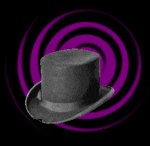

The Vodou Bodies
- Anna maya kosha: the body made of physical matter
- Prana maya kosha: the body made of vital energy
- Mano maya kosha: the body of thought energy
- Vijnana maya kosha: the body of higher intelligence
- Ananda maya kosha: the body of mystical awareness
The reason this struck me was because it seemed so similar to a break-down that Wade Davis discusses in The Serpent and the Rainbow:
- The corps cadavre: the physical body
- The n'ame: the spirit of the flesh
- The ti-bon-anj: the part of the soul directly associated with the individual
- The gwo-bon-anj: the part of the soul that is made up of undifferentiated energy
- The z'etoile: the spiritual component that resides not in the body but in the sky; the individual's destiny
As far as I can tell, Metraux seems to be the first person to write about this break-down of the notion of the soul, possibly in a paper called "The Concept of Soul in Haitian Vodu" in Southwestern Journal of Anthropology (1946), although I haven't read that paper. Metraux also talks about the ti-bon-ange and the gros-bon-ange in Voodoo in Haiti.
Deren also talks about the ti-bon-anj and gwo-bon-anj and also uses the term "esprit" to describe the gwo-bon-anj, and she cites Metraux's paper. (Divine Horsemen was written before Voodoo in Haiti). It's not clear to me whether or not Deren had firsthand experience with the use of these terms.
Davis (in an endnote) says that when he was in Haiti the people he met used the terms slightly differently than Metraux (in particular, he noticed Haitians using the terms ti-bon-anj and gwo-bon-anj opposite to what Metraux reported).
A few others also talk about this break-down. Shannon Turlington mentions it in The Complete Idiot's Guide to Voodoo and Do You Do Voodoo. Houngan Ross Heaven, in Vodou Shaman talks about the three souls of man: the gros-bon-anj, the ti-bon-anj, and the met tet. He also refers to Ashe as a type of energetic power (I think his use is similar to the concept of n'ame, but I'm not entirely sure -- for my part, I've only seen the term 'ashe' in New Orleans and I'm not too familiar with it).
My maman kanzo was very explicit about not being familiar with the terminology. And I have not yet met an initiate who claimed to have learned that information from traditional teaching. I can imagine three reasons why this central information about the soul doesn't apply:
- Perhaps this information is regional. My maman kanzo mostly resides in Jacmel, the southern part of Haiti. Perhaps the experience is different in Port au Prince or other parts of Haiti.
- Perhaps this information has ceased to be transmitted. Deren and Metraux picked up this information in the 40s and 50s, and perhaps it's just not thought about any more. Recall that a lot has changed in Haiti in the last 50 years. Most other writers who discuss it don't really seem to have learned it through teachings, and I think that they're repeating what Deren, Metraux and Davis have said. For example, I know that Houngan Ross Heaven didn't learn these terms through his maman kanzo because his maman kanzo is also my maman kanzo.
- Perhaps the original writers (Metraux, Deren, Davis) made too much out of minor things that were said to them. Davis' writings provide me with the best sense that these were terms that he actually discussed at length with people. I'm hoping to get a copy of Metraux's original essay because his book doesn't give too much indication about how he learned about these concepts.
I'm personally very interested in hearing about anyone's direct experience with these teachings. If you've been taught about the Vodou bodies from your maman or papa kanzo, I'd love to hear about it.
Copyright © 2004 by B.C. Holmes. Last updated April 18th, 2004.
Back to the main page.